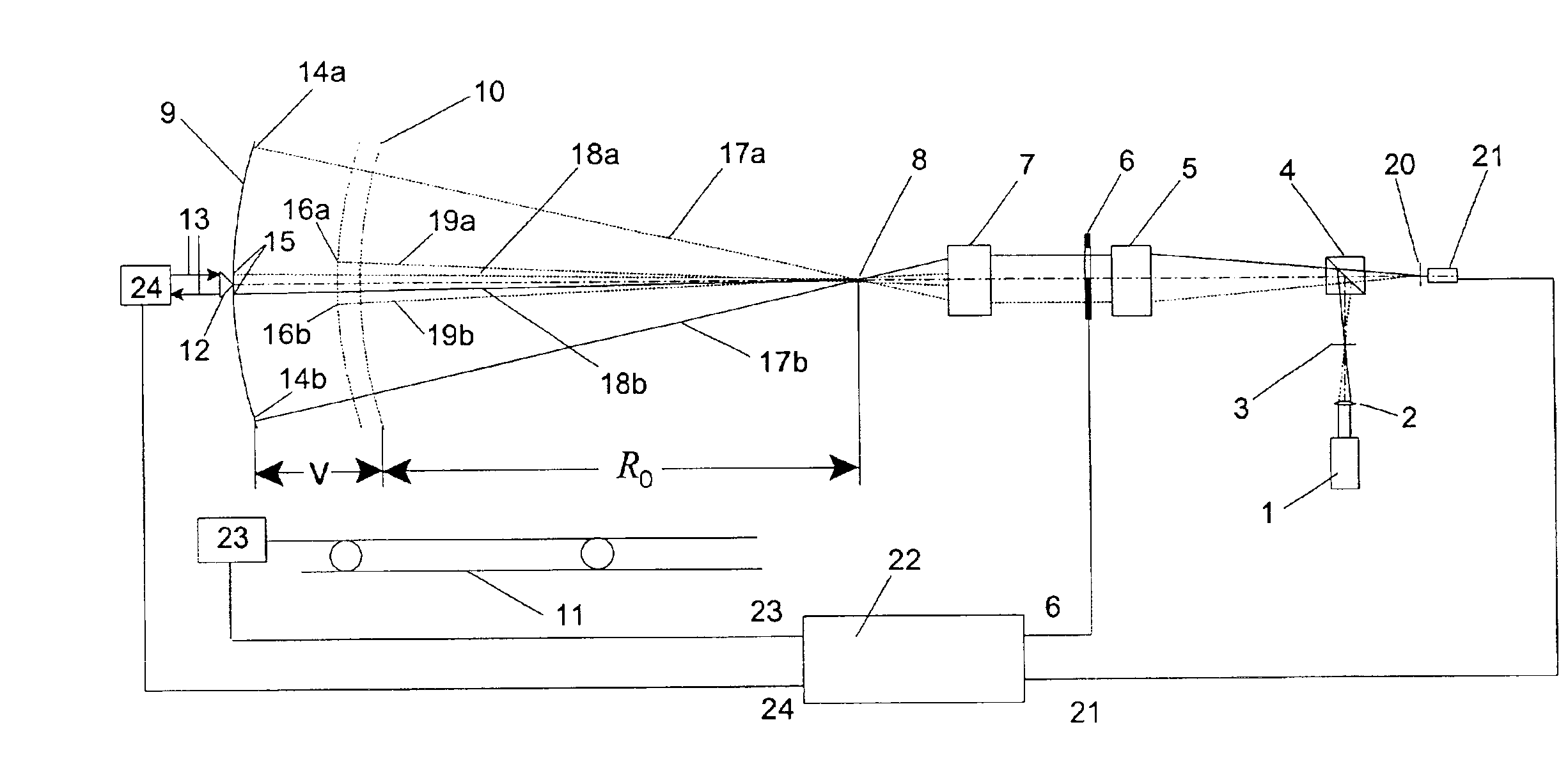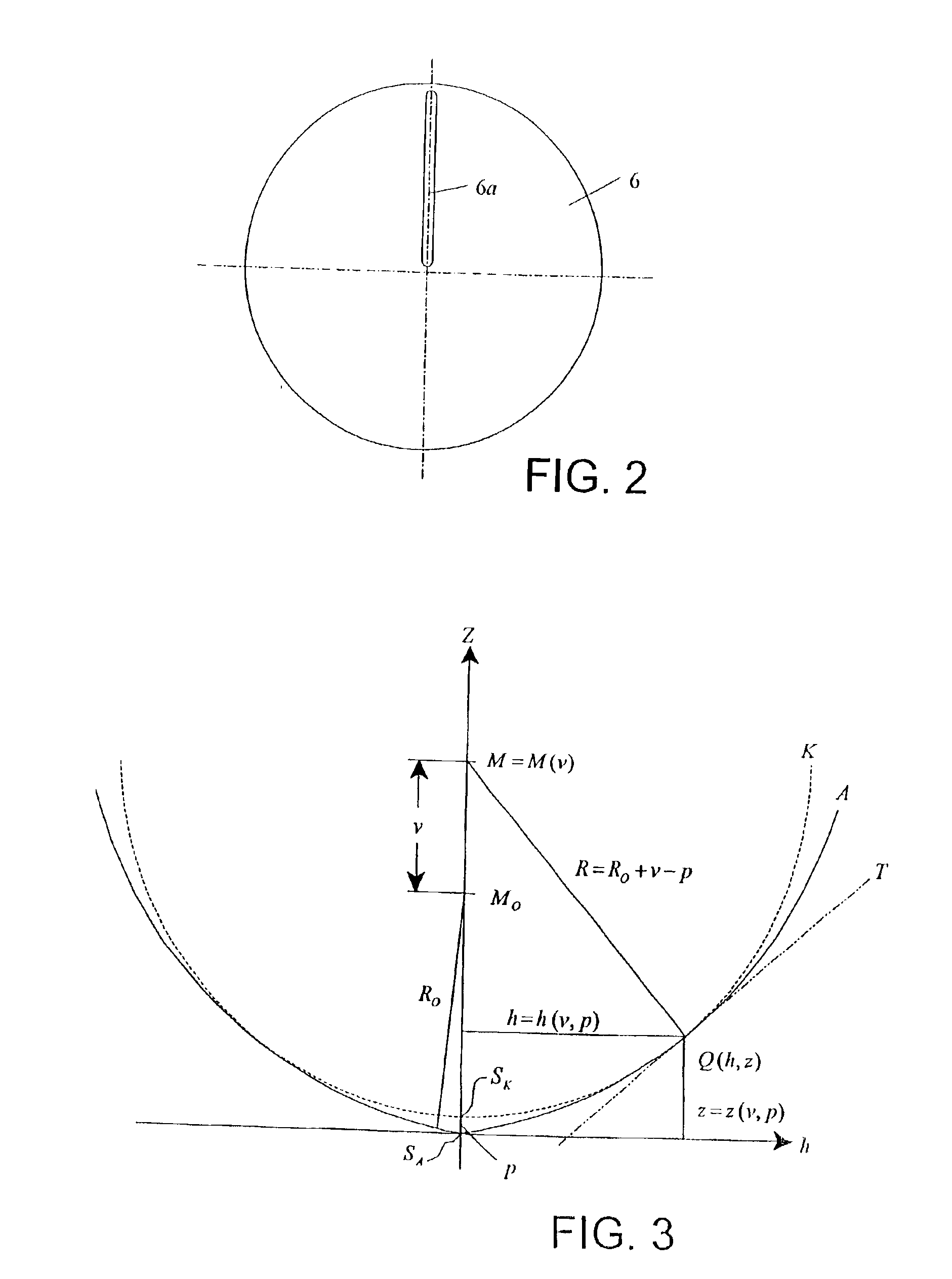Scanning interferometer for aspheric surfaces and wavefronts
an interferometer and aspheric surface technology, applied in the field of interferometry, can solve the problems of difficult measurement of aspheric surfaces and wavefronts, and rare and expensive materials
- Summary
- Abstract
- Description
- Claims
- Application Information
AI Technical Summary
Benefits of technology
Problems solved by technology
Method used
Image
Examples
Embodiment Construction
The preferred embodiments together with a associated algorithms will now be described in a more detailed manner. Reference now made to FIG. 1 which shows a simple embodiment of the invention. Light from a coherent light source 1 is focused by a lens 2 into an aperture 3 and hits a beamsplitter 4. The aperture 3 is located in the focal plane of a collimator lens 5, so a plane wave emerges from the collimating lens 5. This plane wave strikes a slit aperture 6, which may be worked into a piece of metal or evaporated onto a glass plate. In FIG. 1, slit aperture 6 lets rays above the optical axis pass and blocks the rays below the optical axis; but a certain region around the optical axis is open all the time, e.g. the slit aperture 6 does not end exactly at the optical axis (See slit 6a in FIG. 2).
In FIG. 1, the rays that pass slit 6a enter a de-collimator lens 7, which focuses the light at a focus point 8 which is an image of aperture 3. Lenses 5 and 7 are highly corrected to have only...
PUM
 Login to View More
Login to View More Abstract
Description
Claims
Application Information
 Login to View More
Login to View More - R&D
- Intellectual Property
- Life Sciences
- Materials
- Tech Scout
- Unparalleled Data Quality
- Higher Quality Content
- 60% Fewer Hallucinations
Browse by: Latest US Patents, China's latest patents, Technical Efficacy Thesaurus, Application Domain, Technology Topic, Popular Technical Reports.
© 2025 PatSnap. All rights reserved.Legal|Privacy policy|Modern Slavery Act Transparency Statement|Sitemap|About US| Contact US: help@patsnap.com



